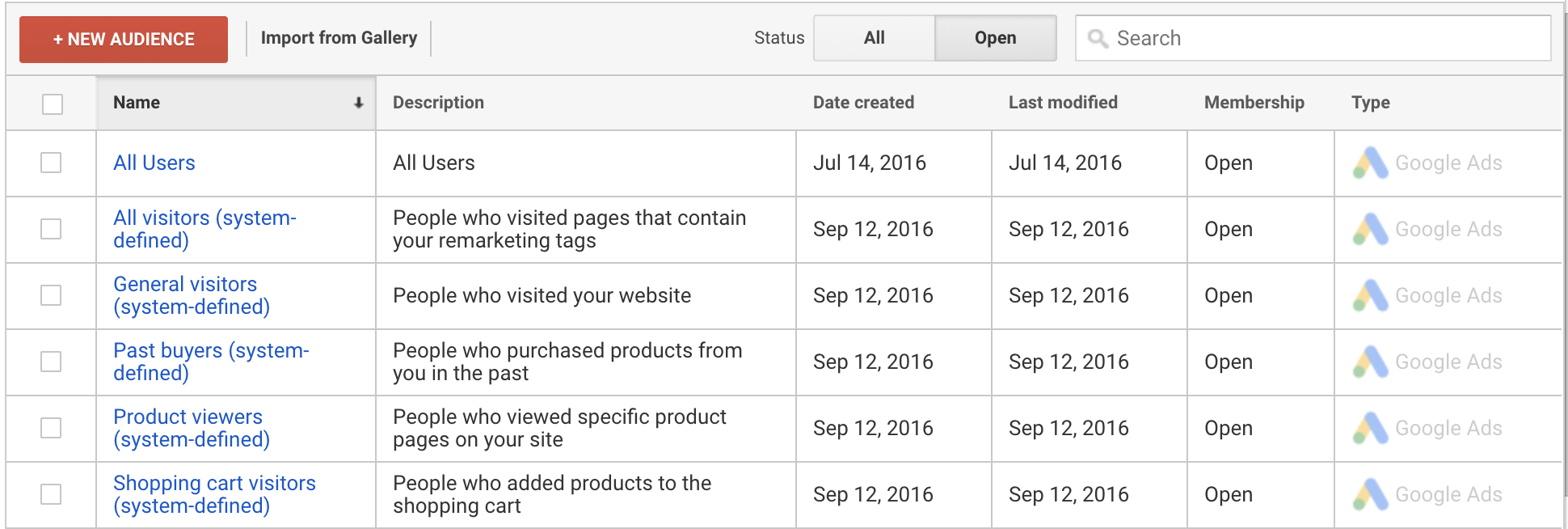Taking Advantage Of Remarketing in Google Analytics: A Comprehensive Guide
Utilizing remarketing in Google Analytics supplies organizations a strategic side in reaching out to possible consumers. This guide will certainly drop light on the necessary actions involved in harnessing the complete capacity of remarketing in Google Analytics, leading to boosted marketing results.
Understanding Remarketing in Google Analytics
Remarketing in Google Analytics permits organizations to purposefully target individuals that have previously communicated with their website or mobile application. By leveraging information from Google Analytics, companies can produce tailored remarketing checklists based upon customer habits, such as web pages seen, activities taken, or certain goals attained. This effective device makes it possible for businesses to re-engage with customers that have revealed rate of interest in their product and services, eventually increasing the likelihood of conversion.
Comprehending the various kinds of remarketing methods is critical for a successful campaign - What Is “Remarketing” In Google Analytics?. Google Analytics offers different alternatives, consisting of conventional remarketing, dynamic remarketing, and remarketing listings for search advertisements (RLSA) Each type offers a special purpose and can be tailored to satisfy particular marketing goals
Additionally, evaluating the efficiency of remarketing campaigns is crucial for enhancing results. Google Analytics provides important insights right into the performance of various remarketing approaches, enabling organizations to make data-driven decisions and refine their targeting strategy. By continually readjusting and keeping an eye on remarketing efforts based upon analytics data, companies can maximize ROI and drive success in their marketing efforts.
Establishing Remarketing Campaigns

After establishing target market listings, the next step is to connect Google Analytics with Google Advertisements. By connecting these 2 platforms, businesses can perfectly move target market lists from Google Analytics to Google Ads for remarketing purposes. This combination enables for more specific targeting and better project performance.
Once the accounts are linked, businesses can produce remarketing projects in Google Advertisements using the audience notes previously specified in Google Analytics. These projects can be personalized with certain ad creatives, messaging, and bidding process strategies to properly re-engage with previous site visitors and drive conversions. By complying with these actions, services can utilize the power of remarketing to enhance their advertising and marketing efforts and boost ROI.
Making Use Of Target Market Division Methods

Predefined sections in Google Analytics permit you to swiftly analyze typical target market categories like brand-new individuals, returning users, or individuals that completed a details objective on your web site. Customized segments, on the various other hand, enable you to create unique sectors based on particular criteria that are very important to your organization goals. Dynamic remarketing lists instantly change based on individual behavior, revealing tailored advertisements to customers who have actually engaged with your website specifically ways.
Analyzing Remarketing Performance Metrics
Upon reviewing the performance of remarketing campaigns in Google Analytics, the analysis of vital performance metrics provides important understandings into target market engagement and conversion rates. By diving right into metrics such as click-through rates (CTR), conversion rates, expense per procurement (CERTIFIED important source PUBLIC ACCOUNTANT), and return on advertisement invest (ROAS), marketers can evaluate the success of their remarketing efforts. Examining these metrics allows online marketers to optimize campaigns, refine audience targeting, and allocate budget plans effectively to improve total remarketing efficiency.
Enhancing Remarketing Techniques
When refining remarketing methods in Google Analytics, focusing on target market division is critical for achieving campaign success. By splitting your target market right into certain sectors based upon their actions, demographics, or rate of interests, you can tailor your advertisements better per group. This targeted strategy enhances the probability of engaging customers that have actually currently revealed interest in your services or items, bring about greater conversion rates.
Another crucial aspect of enhancing remarketing methods is continually testing and refining your projects (What Is “Remarketing” In Google Analytics?). A/B screening various ad creatives, messaging, or offers can help you determine what reverberates finest with your target market and drives one of the most conversions. By assessing the performance of these examinations in Google Analytics, you can make data-driven choices to optimize your remarketing initiatives even more
In addition, leveraging dynamic remarketing can significantly enhance your project results. This feature permits you to show customized advertisements to users based on their past communications with your website, showcasing solutions or items they have formerly viewed. By delivering customized content to users based on their rate of interests and behaviors, dynamic remarketing can help enhance interaction and drive conversions.
Verdict
Finally, utilizing remarketing in Google Analytics is a calculated strategy to target individuals who have actually formerly involved with a site. By developing personalized target market lists and using audience division strategies, businesses can optimize remarketing campaigns for boosted conversion prices. Examining useful content efficiency metrics and continually enhancing techniques are vital for optimizing the performance of remarketing initiatives.
Google Analytics supplies various options, including conventional remarketing, dynamic remarketing, Visit Website and remarketing lists for search ads (RLSA)After establishing up audience listings, the following step is to link Google Analytics with Google Ads. By connecting these two platforms, companies can seamlessly transfer audience lists from Google Analytics to Google Ads for remarketing functions.When the accounts are connected, services can create remarketing projects in Google Advertisements utilizing the target market lists previously specified in Google Analytics.When refining remarketing approaches in Google Analytics, concentrating on target market segmentation is critical for accomplishing campaign success.